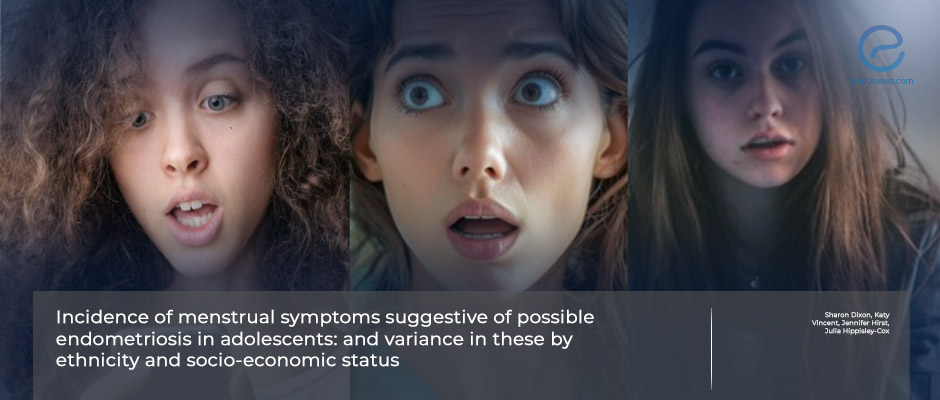GP Records May Hold Information About Possible Endometriosis in Adolescents
Aug 28, 2024
Study documents for the first time symptoms suggestive of possible endometriosis in adolescents in GP records.
Key Points
Highlights:
- The prevalence of coded dysmenorrhoea among adolescent females is much lower in GP records compared to what is suggested in community surveys.
- There are demographic disparities in coded symptoms.
Importance:
- These findings underscore the need to explore these issues further to ensure adolescent females of all ethnicities receive the guidance they deserve.
What’s done here:
- Data analysis was conducted on a cohort of 2,843,347 female adolescents spanning from January 1, 2011, to June 30, 2021.
- Among them, approximately 3.5% had coded dysmenorrhoea, and 1994 (0.07%) had documented endometriosis.
Key results:
- The cumulative incidence of dysmenorrhoea for girls who turned 10 in 2011 was 7.2% and the cumulative incidence of endometriosis was 0.12%.
- Researchers identified several symptoms potentially linked to dysmenorrhea and endometriosis during adolescence, including heavy or irregular menstrual bleeding, pelvic pain, dyspareunia, premenstrual syndrome or premenstrual dysphoric disorder, cystitis, and irritable bowel syndrome.
Lay Summary
The prevalence of coded dysmenorrhoea in the records of general practitioners (GP) is significantly lower than what is suggested in community surveys, according to a new study published in the British Journal of General Practice. However, menstrual symptoms in adolescents are commonly seen in primary care and deserve specific guidance and resources. Moreover, there seem to be demographic patterns that need to be explored further.
To document the incidence of adolescent endometriosis and symptoms associated with it such as period pain in English GP records, a team of researchers led by Dr. Julia Hippisley-Cox from the University of Oxford used data from the QResearch primary care database for adolescent females, ages 10 to 19 from January 1, 2011, to June 30, 2021.
The team analyzed data from 2,843,347 female adolescents. Of these, 98 887 (3.48%) had coded dysmenorrhoea, and 1994 (0.07%) had documented endometriosis.
The cumulative incidence of dysmenorrhoea for girls who turned 10 in 2011 was 7.2% while the cumulative incidence of endometriosis was 0.12%.
The researchers reported that the prevalence of coded symptoms during adolescence, which may be associated with dysmenorrhoea and endometriosis are heavy or irregular menstrual bleeding, pelvic pain, dyspareunia, premenstrual syndrome and/or its severe form called premenstrual dysphoric disorder, cystitis, and irritable bowel syndrome.
The team also reported disparities in coding for these variables based on ethnicity and socioeconomic status.
The incidence of prescribed hormonal medication, with and without coded dysmenorrhoea also varied with ethnicity. However, this was less apparent for non-steroidal anti-inflammatory drugs.
Research Source: https://pubmed.ncbi.nlm.nih.gov/38902068/
Dysmenorrhoea adolescents.

